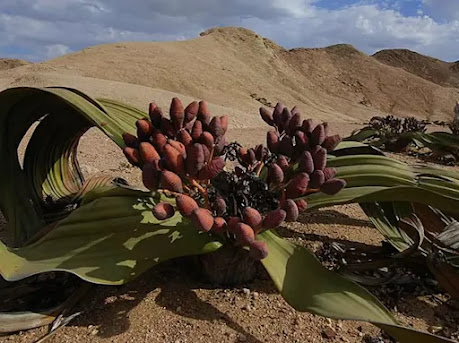Leafy Methuselah : The Plant that 'cannot die' reveals its genetic secrets.
The longest-lived leaves in the plant kingdom can be found in the hyper-arid desert that crosses the boundary between southern Angola and northern Namibia.
In Afrikaans, the Welwitschia plant is named ''tweeblaakanniedood,'' which means two leaves that cannot die.'' The naming is apt : Welwitschia grows only two leaves in a lifetime that can last millenniums.
In a new study, researchers report some of the secrets behind the Welwitschia's shape, longevity and resilience.
Some 86 million years ago, the entire Welwitschia genome doubled during a time of increased aridity and prolonged drought in the region, said Tao Wan, a botanist in China and the study's lead author. A large amount of Welwitschia's genome is ''junk'' self-replicating DNA sequences called retrotransposons.
The Welwitschia genome underwent widespread epigenetic changes that silenced those junk DNA sequences, through a process called DNA methylation. This process helped to drastically pare down the size of Welwitschia's duplicated library of DNA, giving it ''a very efficient, low-cost genome.''
Welwitschia has other genetic tweaks hidden up its leaves. The average plant grows from apexes, or the tops of its stem and branches. But Welwitschia's growing tip dies, and leaves instead pour out of an area of the plant's anatomy called the basal meristem.
A large number of copies or increased activity of some genes involved with efficient metabolism, cell growth and stress resilience in this area may help it continue to grow under extreme environmental stress. [ Richard Sima ]

.png)


0 comments:
Post a Comment
Grace A Comment!